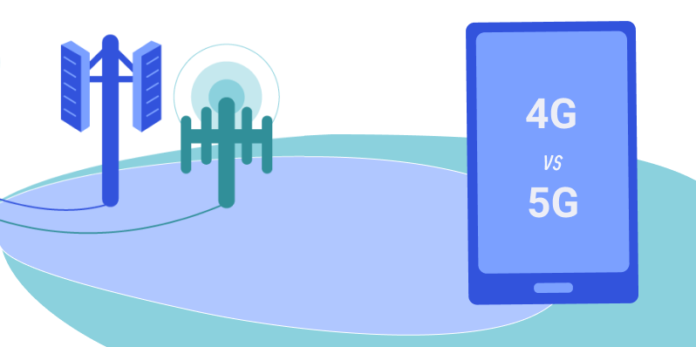4G stands for the fourth generation wireless internet technology. While 5G is a step up and stands for the fifth-generation wireless internet technology. 5G is superior to 4G in most ways, it is faster, lower latency, and has more bandwidth. It is, however, not as widespread yet.
As a network engineer, I get questions about 5G all the time. What to expect from it, and how it differs from 4G. Here is my answer, so keep reading to learn more.
Speed
When talking about 5G, speed is the most mentioned differential factor from 4G. And this is somewhat expected since every new cellular generation has been faster than the previous one. 4G has a max capacity of around 100 Mbps, but the real world speed users get a range between 15-40 Mbps.
This is significantly slower compared to 5G. It has a max capacity of 20 Gbps, 100 times that of 4G. The real-world speeds are however slower, ranging from 50 Mbps to 3Gbps. Although it’s not that simple. This is because there are three main types of 5G, which operate on different frequencies and speeds.
The slowest one is called low-band 5G, this is somewhat faster than 4G with a speed of around 50-250 Mbps. It operates between 600-850 MHz which is very similar to the one 4G networks use. It trades speed for coverage.
The middle one is called mid-band 5G. It supports speeds between 100-900 Mbps and operates in the 2.5-3.7 GHz range. It has a lower coverage per cell tower than low-tier but is faster.
The highest speed is high-band 5G. It supports speeds between 1-3 Gbps and operates in the 25-39 GHz range. This type of 5G has a very short range but insane speeds, therefore, it will operate in cities and other densely populated areas.
Latency
Latency is the speed it takes for a packet (data) to travel between your device to the internet and back. You can think about it as a delay between giving a command (like start loading a web page) to when the process actually starts. It should not be confused with internet speed.
4G has a latency of around 50 milliseconds, compared to 5G which has a latency of 1 millisecond.
5G low latency will help develop new service devices that rely on fast communication with the cloud. These could include self-driving cars, remote surgical operations, and translation software.
Coverage
As for now, 4G has a much bigger coverage compared to 5G. But this is bound to change in the foreseeable future. As for 2020 the infrastructure spending was 5G is $8.1 Bn, and that number will rise.
Currently, 5G exists in about 300 cities worldwide. But the coverage in these cities is often limited to certain areas. And as for low-band and mid-band, the coverage is nearly non-existent. This is because most internet companies are starting from the top and going down. Beginning with high-band 5G in the cities and then goes down from there.
Technologically speaking, 4G has a better coverage range per cell tower compared to the mid-band and high-band 5G, but roughly the same as the low-band 5G.
Bandwidth
5G has significantly more bandwidth than 4G. This is because 5G has more efficient use of the spectrum. 4G only uses 600 MHz to 2.5 GHz while 5G is split into three types. And each uses a different interval of the frequency spectrum.
These three types have their own range and speed which makes them useful for different applications. These could be consumers, industries, factors, or business. This is one of the biggest pros with 5G and is a big part of why it’s pushed as hard.
What is next
5G isn’t going to replace 4G in the near future, they will in fact coexist and work like complements to each other. 5G is also not made to replace Wi-Fi either, but rather an alternative where there is no Wi-Fi or very slow Wi-Fi.
As connectivity improves it is used to power more and more complex network infrastructure. Things like smart homes, phones, cars, and garbage systems are all getting connected to the cloud.
Wireless technologies such as Bluetooth, WiFi, and 4G have a performance trade-off when connecting to many devices. But 5G has no such trade-off and will, therefore, enable a more connected society.
Bottom Line
5G is superior to 4G in nearly every way. It is faster, has lower latency, and improved bandwidth. But as for today, it’s not nearly as widespread.
My guess is that in the next 5-10 years we will be using 5G for the most part. With 4G being something of the past.








